Hannah Fallon’s work does not shout. The artist’s IRL low-fi aesthetic is mirrored by her black and white Instagram feed which celebrates stillness, the handmade, and magic. Fallon’s work is as labor-intensive as it is meditative, with a process reminiscent of canonic feminist artists Carolee Schneemann and Lucy Lippard. Though Fallon employs text as form, her work is notably less confrontational than that of Jenny Holzer, Barbara Kruger, or even Zoe Buckman. As in the case of Fallon’s flags, the work’s power lies in its materiality. Untranslatable to meme form, Hannah Fallon’s work compels the viewer to visit each piece in person to face, and feel, its weight.
Online• Feb 06, 2018
In Conversation: Hannah Fallon with Lauren Pellerano Gomez
Hannah Fallon’s work does not shout. The artist’s IRL low-fi aesthetic is mirrored by her black and white Instagram feed which celebrates stillness, the handmade, and magic.
Interview by Lauren Pellerano Gomez
Hannah Fallon, "Eternal Return in Red" (2017) Image Courtesy of the Artist
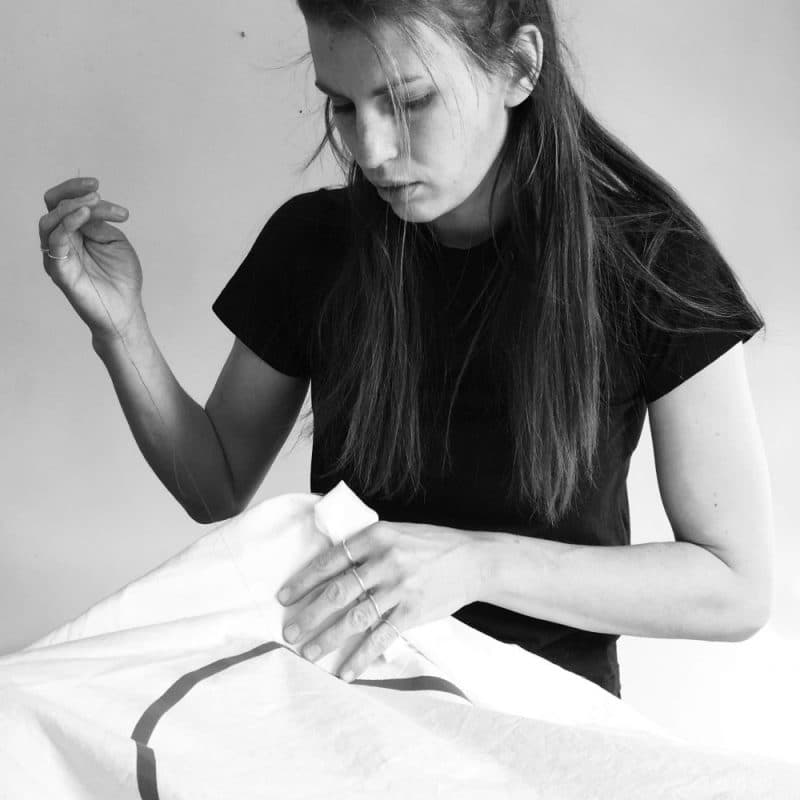
Hannah Fallon, "Eternal Return in Red" (2017) Image Courtesy of the Artist
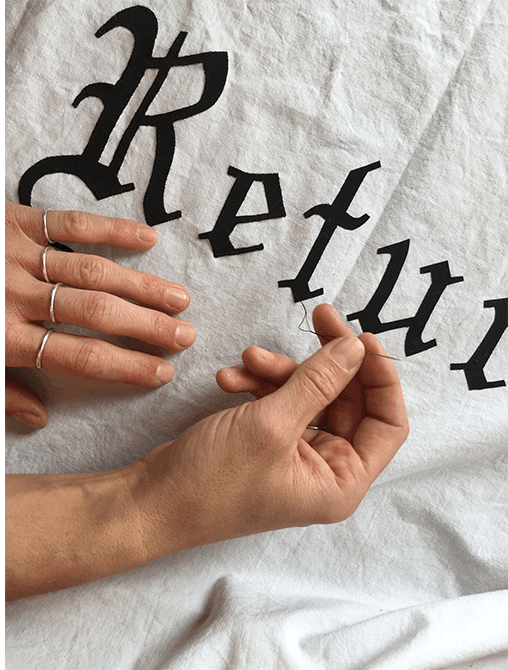
Hannah Fallon, Detail, “Return” (2017) Image Courtesy of the Artist
LPG: What inspired this body of work?
HF: When I was a kid, my brother’s friend had a pirate flag that I coveted. It was faded, ripped, and worn — and I thought it was beautiful. As an adult, I started thinking to myself, “I am going to make my own pirate flag like his, but I’ll sew it by hand.” I carried that idea with me for a few years while I waited for the imagery to come to me.
Finally, one day last year, I realized my flag had to do with eternity. So many of us struggle with the problems of everyday life. The very idea of eternity shrinks those problems and puts them into perspective. I have been thinking about cycles a lot this year: things that go on forever. So the endless loop (or the eternal return, as I like to call it) was the first image I used on a flag. The endless loop continues to appear in the flags I make and has become an important thread which runs through each of them.
LPG: Tell us about the process of making these pieces.
HF: Hunting for the perfect material to work with is really fun for me. All of my fabric is recycled, which means I scour thrift stores, then rip apart the pieces I find before I begin to reshape them. I use 100% cotton for the flags, and 100% silk for the imagery I apply to the flag. I cut the silk into the shapes I am imagining, and then the next part is the best – and worst – part: the stitching. I make hundreds of tiny stitches by hand – which takes a really long time – especially if I am spelling out a word in the silk.
I have always excelled at repetitive, almost obsessive, work. It lifts me out of myself and puts me in another place in a positive way. My mind wanders without the boundaries of conversation. I almost feel as if the thoughts that come to me in those moments are some of the clearest or best I have. It’s all like a kind of ascension.
LPG: Why are you drawn to sewing in your practice?
HF: I have always loved sewing and working with worn-in fabrics. These fabrics tell the story of their lives through a language of holes, stains and, in some cases, mending. I like the idea of keeping old fabrics alive by infusing them with new life, as in the case of the flag series. Ultimately, it’s about the cycle.
LPG: What were some of the challenges you encountered with this body of work and how did you respond to these challenges?
HF: Since I grew up hand sewing everything, the process was fairly straightforward for me. The one area in which I struggled was with the silk. Silk is a woven fiber, and it naturally wants to unravel, but I don’t want it to! It’s important to me that the edges of my shapes look clean, especially because I use visible mending on other parts of the pieces which is intentionally a little rough.
I had to figure out how to charm the silk into doing what I want. I came up with an idea about a lightweight material which could be fused to the back of the silk to hold those fibers together. I had used something similar years ago when I made a wool jacket. I visited YouTube and started watching videos about applique and, sure enough, there were people on there suggesting a similar material. I tried it, and so far I am happy with the results!
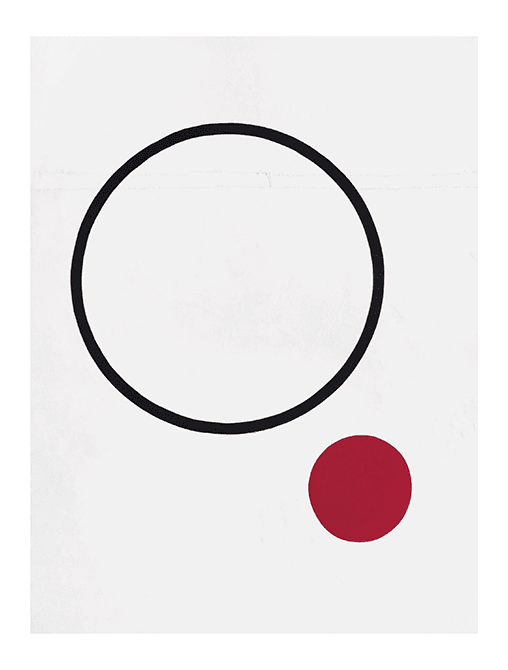
Hannah Fallon “Eternal Return Featuring Mars” (2017) Image Courtesy of the Artist
LPG: The exhibition you showed in at Distillery Gallery is called “Practice: An Assertion of Sympathetic Magic.” Tell us about the exhibition’s theme and how your work relates to this theme.
HF: The concept of sympathetic magic is that a person can be affected by actions performed towards something that resembles or represents said person. In other words, by infusing a meaning or purpose into a physical object, you can affect or alter the state of things for somebody. In a sense, I felt as if I didn’t have to do much to qualify my work for this show.
LPG: What is your relationship to “sympathetic magic” or magic, more generally?
HF: Sympathetic magic is compelling, and I’m curious about it. I like to play with the idea of magic in my practice. I pretty much like to play with any idea as long as it’s kind and not harmful.
LPG: How long have you been creating?
HF: I was creating as soon as I could hold a crayon. I drew everything I could imagine. Creating was my way of playing with the world and with reality. I do a lot of playing. Playing is really important. Play negates rigidity, and it creates a suitable environment for the conception of art.
To play, I think you must be willing to embody a fluidity with the way you interact with the world. Playing feels like a willingness to try things this way and that way and then another way, to make space or even invite the possibility of the unexpected to enter into the process. Then the way you perceive what happens in the world begins to bend, and you discover there is this whole other life to everything. The willingness to open up to that process is the opposite of rigidity and, to me, that is where creation is born.
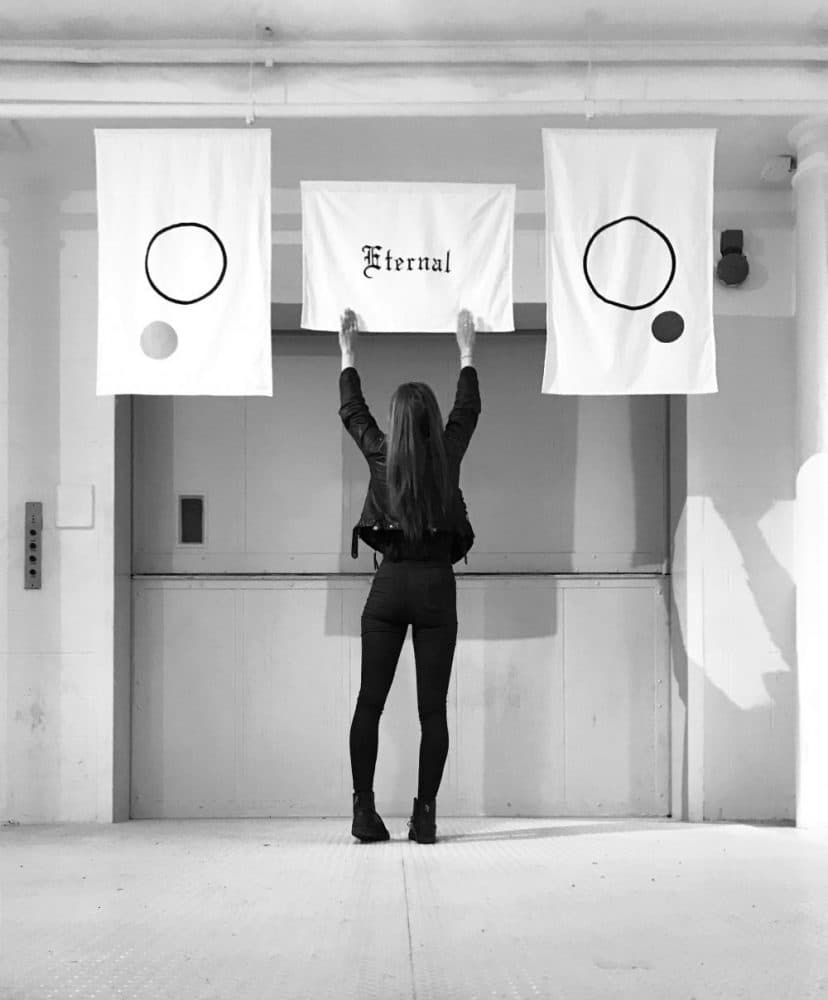
Installation View of Hannah Fallon’s Work (2018) Photo by Lauren Pellerano Gomez
LPG: Why did you choose to exhibit these flags, in particular?
HF: The pieces I chose to show at “Practice” focus on the areas in which I tend to struggle. If you repeatedly struggle with something, it will probably continue to happen until you examine your behavior and decide to take action to rectify it, right? I see a correlation between that idea, the idea of sympathetic magic, and what I did when I made those particular flags. Action in the name of change can look different for everybody. For me, artistically, it was about placing my struggles alongside the great concept of eternity.
LPG: What do you see yourself working on next?
HF: I will continue to work on my flags. I feel as if this project is in its infancy, as if I am just holding this little baby right now, and I’m trying to feed it and to help it grow and stay alive. Isn’t that what you do with a baby? Like baseline, I mean?
LPG: How would you respond to people who don’t believe creatives can make a career and a living by doing what they love?
HF: In my early twenties, I became interested in the life of artist Tasha Tudor who illustrated children’s books and led a very unconventional, yet compelling lifestyle. I remember watching a documentary about her in which she quoted Henry David Thoreau’s Walden. The quote made a lot of sense to me and has stuck with me since. The quote was this: “If one advances confidently in the direction of his dreams, and endeavors to live the life which he has imagined, he will meet with success unexpected in common hours.”
Hannah Fallon is based in Boston and currently working on a second series of flags.
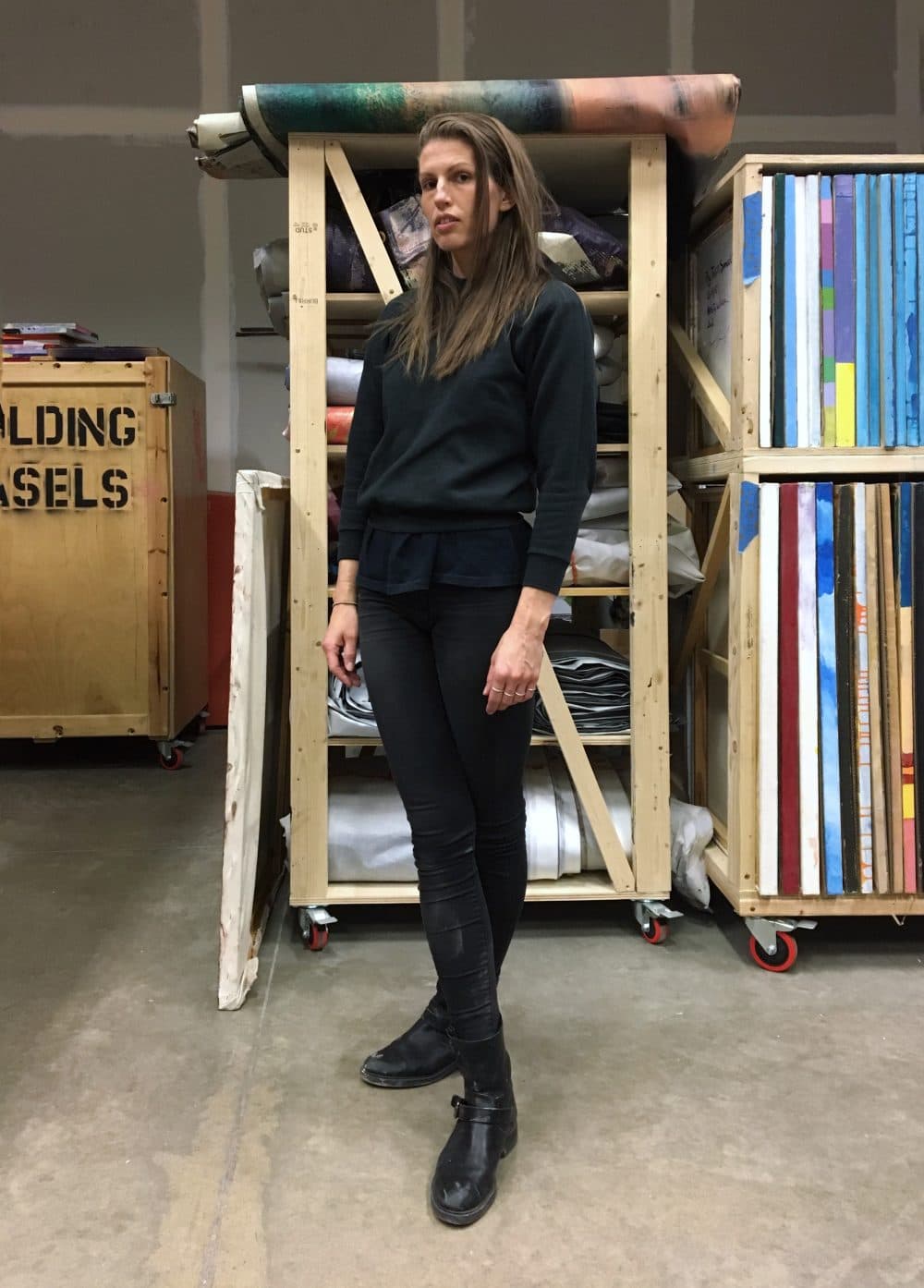
Hannah Fallon, Portrait by Dominique Butori
